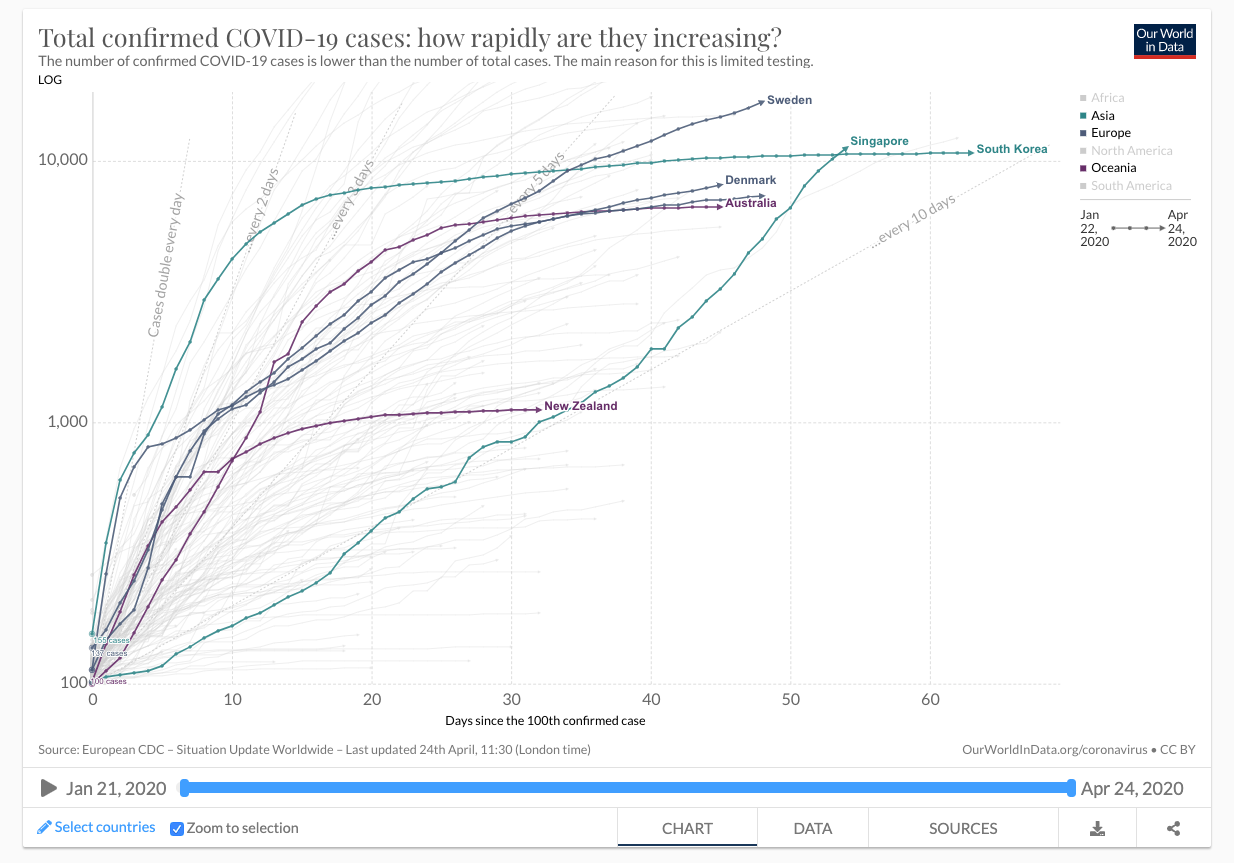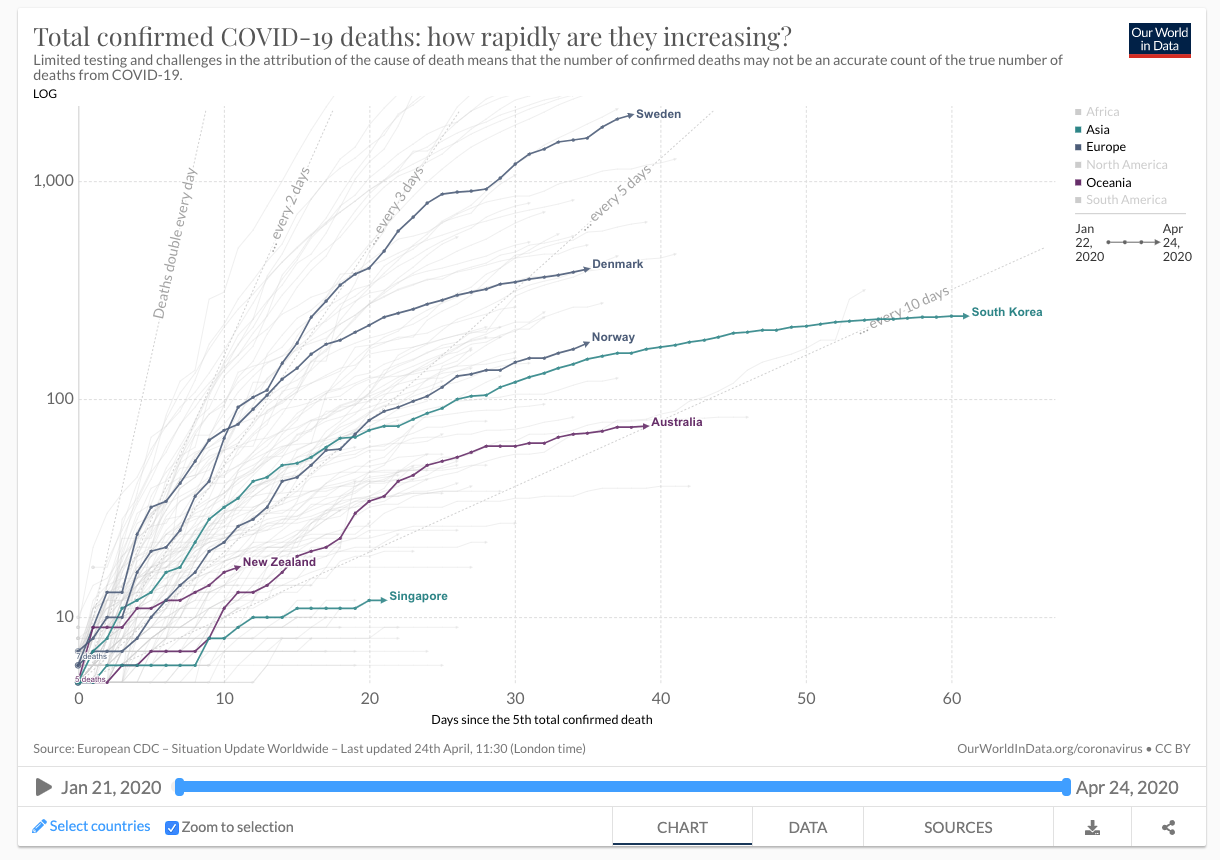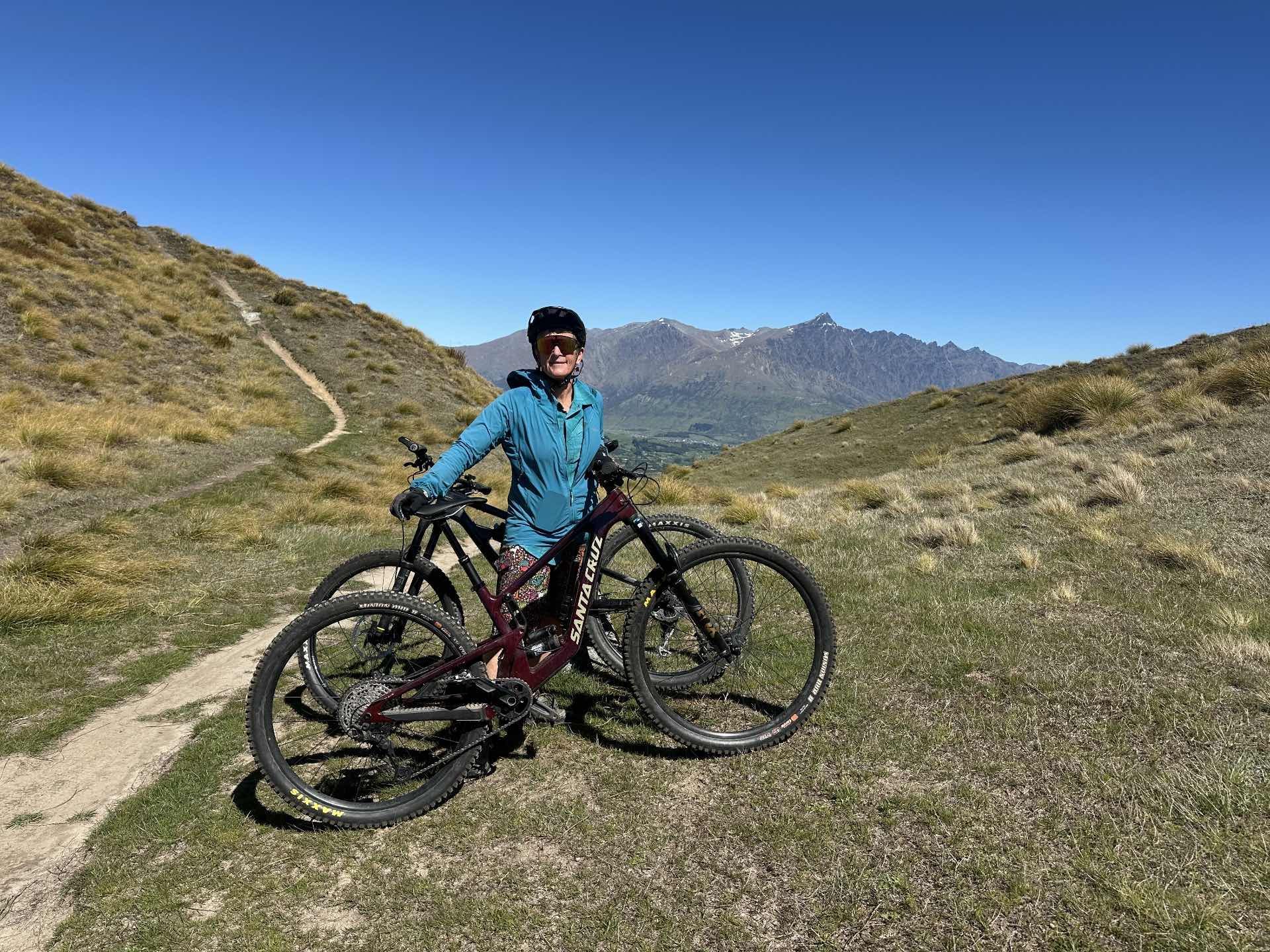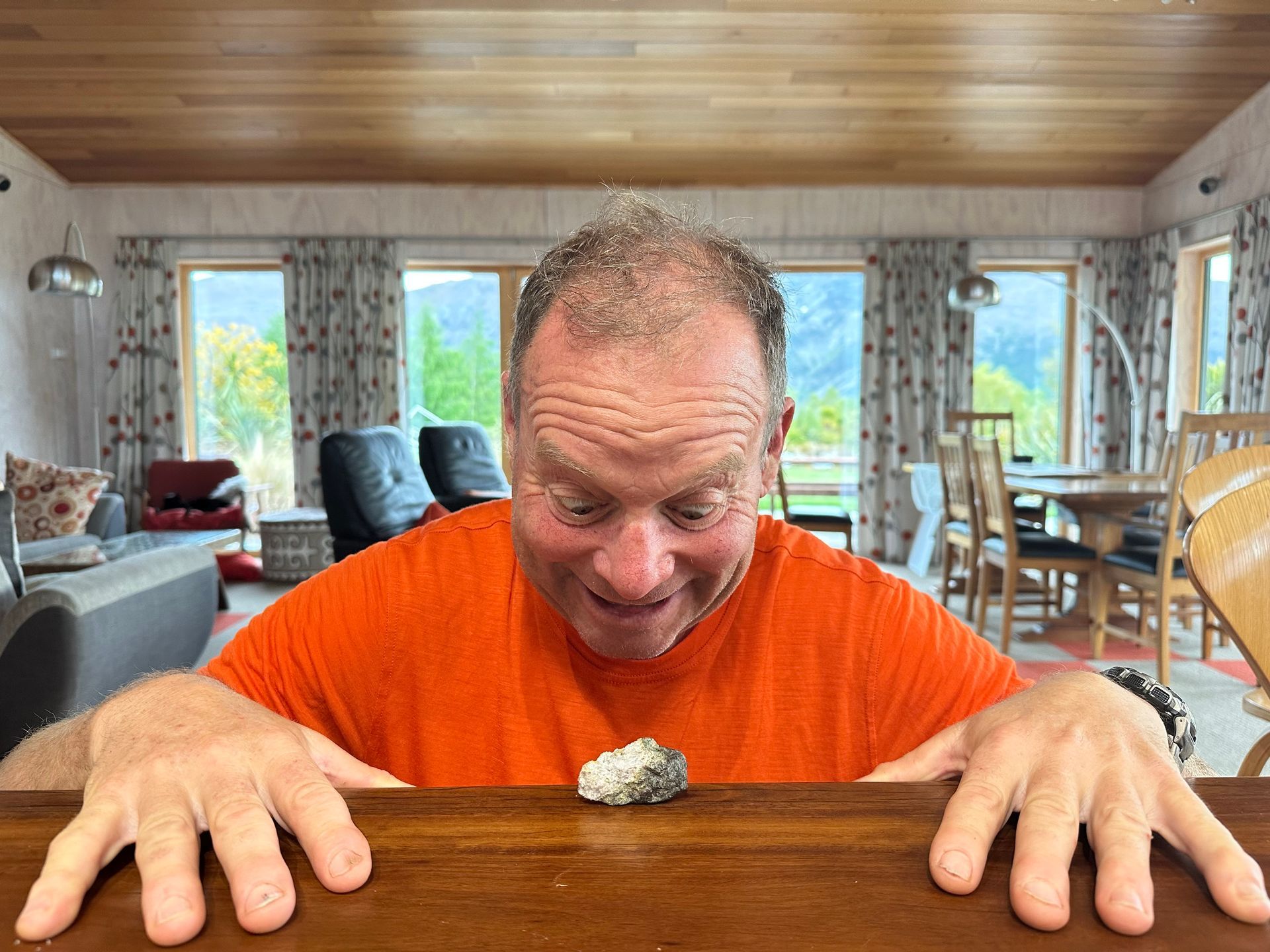A breath of fresh air
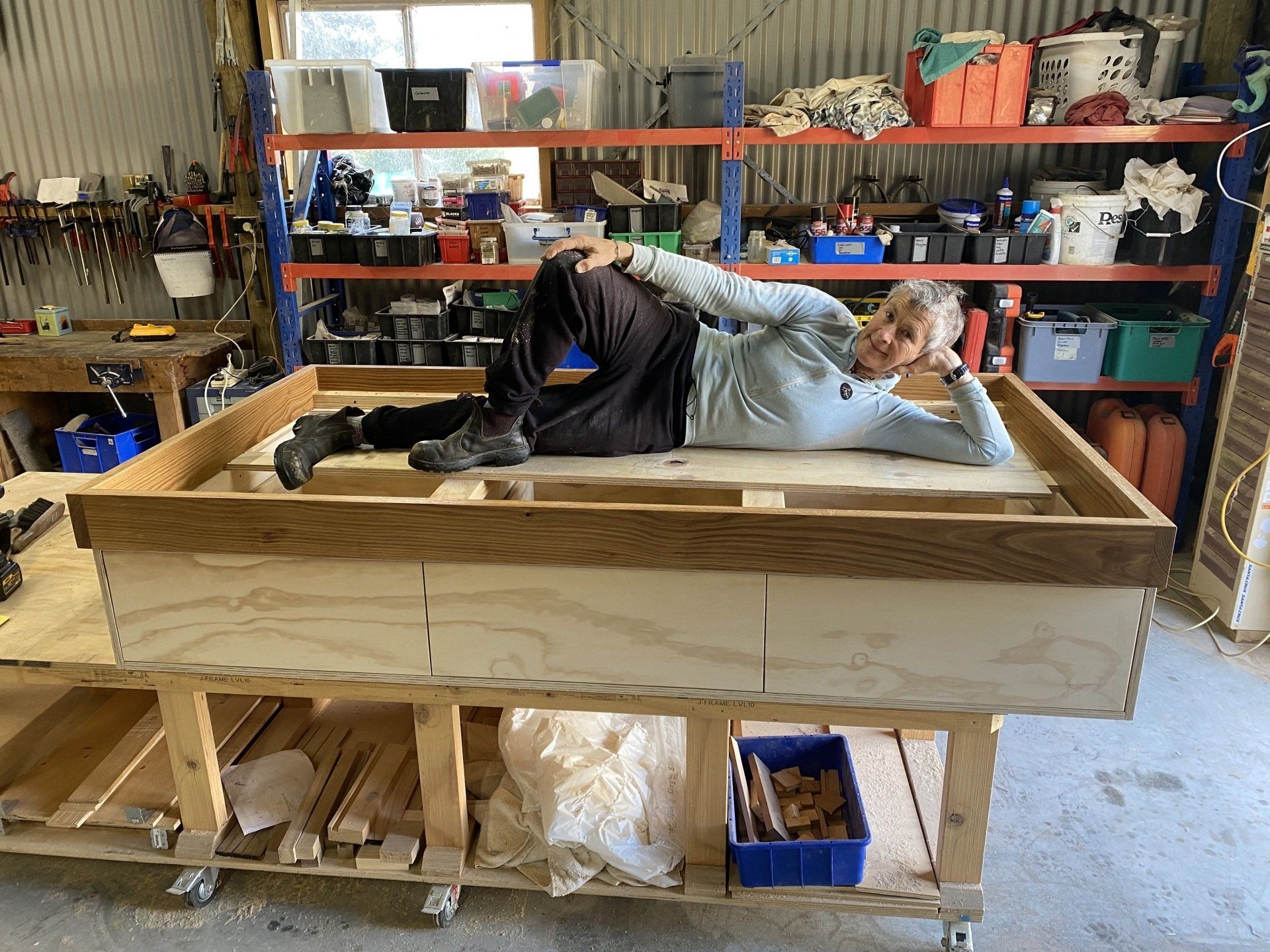
Before I dive into a lockdown summary, here's where my beds are at. I beat the drawers into submission (finally), and tomorrow will see oiling of the drawer cabinet. I still have another two weeks of Level 3 restrictions to complete headboards!
On March 22nd I wrote my first COVID-19 post, the day after Jacinda Ardern announced New Zealand was on Level 2 Alert and the third day after the New Zealand borders were closed, on March 20th (after people entering being required to self quarantine from March 16th). On March 23rd it was announced that New Zealand would go into lockdown, starting midnight March 25th. We were following hot on the heels of Italy, which went into quarantine March 21st, as COVID-19 raged through Lombardy.
The time since late March seems like an eternity, and nothing at all, because it has few milestones with which to mark it. Days have blended into weeks of lockdown, a strange time when supermarket visits are the epitome of degrees of freedom and there is little that differentiates one date from another.
However, in those five weeks that spun past, so much has changed, our experiment has progressed and it has been a long meditative holding of collective breath. I decided today would be a good time to summarise a variety of aspects of the experiment from the outset. Here’s how our cases have trended – on 20th March we had 39 cases total, and the numbers of new cases were increasing daily. By 5 April we hit our peak, though we couldn’t know that till later.
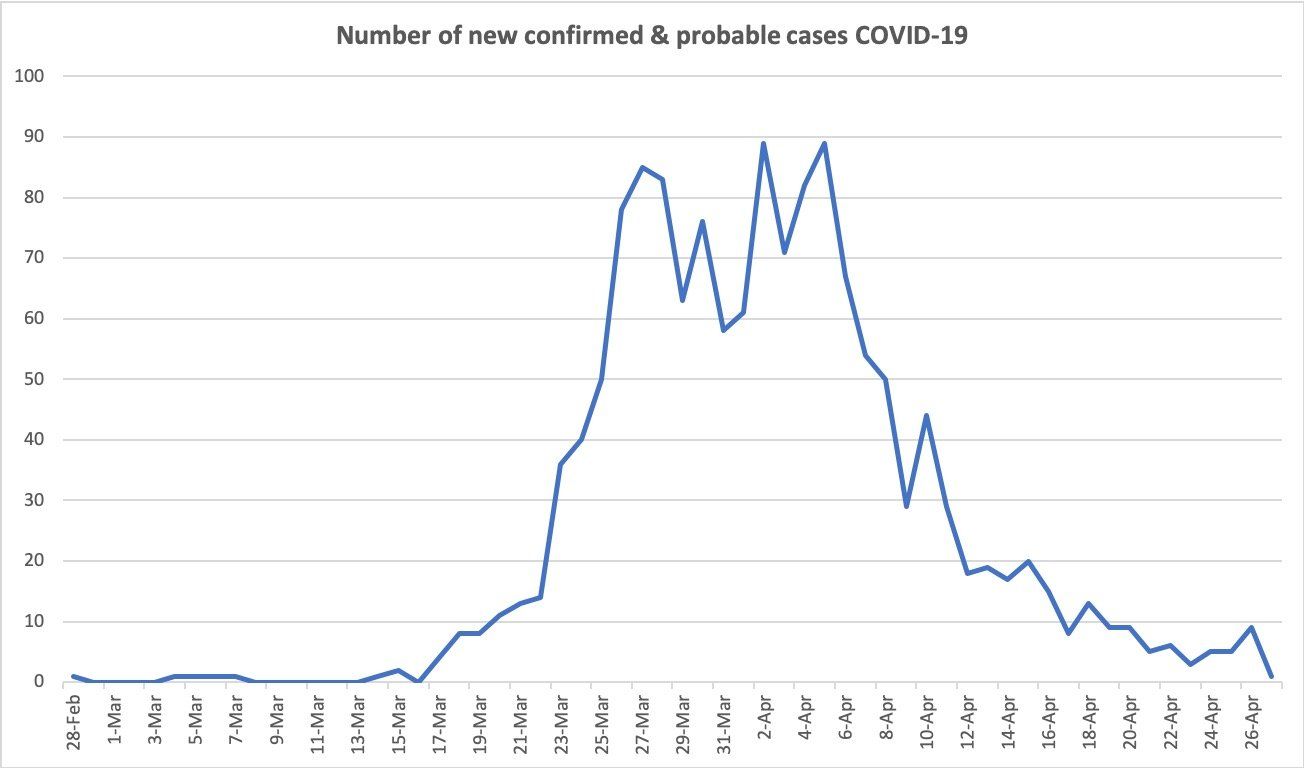
New Zealand has had 19 deaths recorded as being due to COVID-19 – a relatively small number and, at 1.3%, a proportion of cases reasonably similar to the numbers predicted early in our COVID-19 journey (based on the findings in China). China, of course, was the first country to be hit by COVID-19, with Hubei Province in lockdown from 13 February (the lockdowns started in Wuhan city on 23 January) through to 8 April. By late March we were focusing on deaths being more important than numbers of cases, because deaths are more likely to be reported accurately. However, China has somewhat blown that out of the water as they raised their death count by 50% on 18 April, suggesting their figures are variable, at best.
One thing that has become clear is that, in the absence of any control measures which reduce rates of disease transmission, health systems will be overwhelmed by COVID-19 infections. The USA has been at pains to provide the example for the rest of the world; Italy and Spain could be excused for not seeing the freight train coming, but the USA saw it coming and held to its tracks until state governors began to ignore the dictates, or confusions, spread by the orange-headed POTUS. It has been kind of the (semi) United States of America to prove that COVID-19 is no storm in a teacup but is more like a blaring siren.
Another country’s experiment that has become more and more interesting has been Sweden. They chose not to undertake the level of lockdown of their European neighbours. They have more cases and more deaths than Norway or Denmark (and substantial numbers of people in old age care have died), but their medical systems have not been overwhelmed. Their people have retained a far higher degree of freedom and their economy has been less impacted than in many countries throughout the world. International attitudes towards Sweden have veered between envy and condemnation (with the two of these being closely connected!). I don’t think that their experiment is yet played out to an extent that anyone should be making a final judgment. On thing that is clear from the data is that Sweden has not yet ‘flattened the curve’. Another country of interest was Singapore, which appeared to be well under control in the early days, but saw an outbreak develop in foreign worker accommodation which they have not yet got back under control.
The New Zealand focus began as ‘flatten the curve’ of disease, but as it appeared that we were ‘squashing the curve’, we moved to a focus on ‘elimination’. To be fair, the government used the ‘elimination’ word from quite early on, but didn’t make it very clear what they meant. Many, including me, thought they must mean ‘eradication’ i.e. no cases of COVID-19, and that seemed impossible. We now know that ‘elimination’ means the ability to continuously control new cases – if one is identified we can rapidly harness testing, contact tracing and isolation to stop further spread. We are not operating in a scenario where we try to keep a low number of cases, we are in a scenario where the goal is to stamp out every case that pops up.
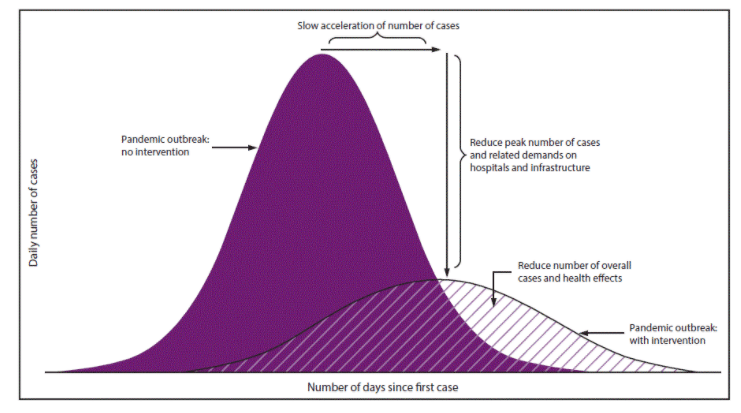
Early on, the New Zealand ‘elimination’ challenge seemed to mean that we could be in Level 4 lockdown far longer than the proposed initial 4 weeks. Wuhan was locked down for 10 weeks to get control of COVID-19, it seemed likely we might be too. What has become apparent over the last month, is that we have had relatively little local transmission going on within New Zealand, therefore lockdown brought COVID-19 to heel (for the time being), far more quickly than many imagined was possible.
Early on in the experiment, there was no data being provided as to the degree of local transmission of disease. Why is local transmission important? Because it means spreading of disease that we are not controlling. We now know that a total of 26% of cases have been local transmission (with 2% still under investigation). 3% of cases have been identified as local transmission where we do not know the source of infection – these are the worrying cases because the infectious person is presumably still ‘at large’, not necessarily self-isolating, and may be further spreading disease.
People who got sick overseas are no longer of great interest in our ‘new case’ statistics, though the Ministry is unfortunately not clarifying the nature of the new cases that are reported each day. Why are they not of interest? Because New Zealand enforced 2 weeks of quarantine at the border on 10 April, to ensure that we do not bring sick people into the community where they could infect others. I should emphasise here that importing of COVID-19 still remains a very significant consideration, in that if we cannot bring people in who are ill, we cannot open up to international travel, or any travel will come with a mandatory minimum 2 week quarantine.
Over the last month, to control the cases within the country, the New Zealand health system rapidly zeroed in on ‘clusters’, which were known groups of cases that had been spreading before lockdown. Clusters are now famous, such as the Queenstown Hereford Breeders conference, the Bluff wedding, the Matamata Pub, the Christchurch resthome. Lockdown has seen some of these clusters ‘closed off’ already, where there have been no new cases for 14 days. This means that lockdown has stopped local transmission from the people infected in the clusters. Contact tracing has ramped up, where people are interviewed and then the people they could have infected are followed up on, and the people those people could have infected are also followed up. We are all now aware of the early issues with contact tracing, how it has been improved and scaled up, and how it is likely that an app, for automated contact tracing via phones, will be made available in the near future. Finding instances of local transmission has been, and will remain, key to control.
Hand-in-hand with contact tracing, New Zealand’s ability to test people for COVID-19 has increased, from levels that were critiqued early on, to some of the highest rates in the world. We are currently only using PCR testing, which is very accurate (the accuracy mainly being limited by sampling technique), but can only detect people who are at a stage of illness where they are actively shedding virus. Antibody testing, to identify people who have been sick and recovered, is not yet being used in New Zealand and available tests are still of questionable accuracy. The New Zealand government has restricted import of antibody tests to ensure we don’t bring in tests which provide misleading results; it is likely that we will see antibody tests used as part of the arsenal in the not too distant future given that Germany (which is a model country in terms of control methods), is now using them.
The lack of antibody testing means that one elephant has not yet been corralled by our experiment, the degree to which there are asymptomatic spreaders of disease out in the community. An early and ongoing fear was of considerable numbers of asymptomatic people spreading COVID-19; this was a key reason I felt doubtful of New Zealand’s ability to eliminate the virus. I now feel doubtful that there are significant asymptomatic people spreading disease (they could have COVID-19, but they are not spreading it). Large numbers have been bandied around as to numbers of asymptomatic people in populations (from 10 to 60%), based on testing from the Diamond Princess cruise ship, Iceland, some studies in specific towns in Italy and Germany, and a USA troop ship. All the studies to date have issues, including numbers of people tested being too small, and antibody tests not being reliable. More importantly, if there were large numbers of asymptomatic spreaders of disease, one would expect New Zealand’s transmission rate to be higher. Although we are in lockdown, essential service workers are still coming into contact with one another (I can’t find numbers for how many of these people there are) and then going back to their bubbles with potential to infect those people. There is little evidence of this happening with our new cases staying in the single digits and a rough estimate of transmission rate over time remaining at less than 0.5 according to the Prime Minister. One can calculate growth factor as a rough proxy for transmission rate – the numbers of new cases as a ratio of the existing cases. If I calculate this on the basis of an averaged case load 5 days prior, given that infections take 5 days average to appear, our growth factor has stayed below 0.5 since 12 April except for 1 day. Additionally, any growth factor is probably too large because a considerable proportion of our cases are being imported, therefore are not actually about transmission at all i.e. there appears to be relatively little infection going on in New Zealand now.
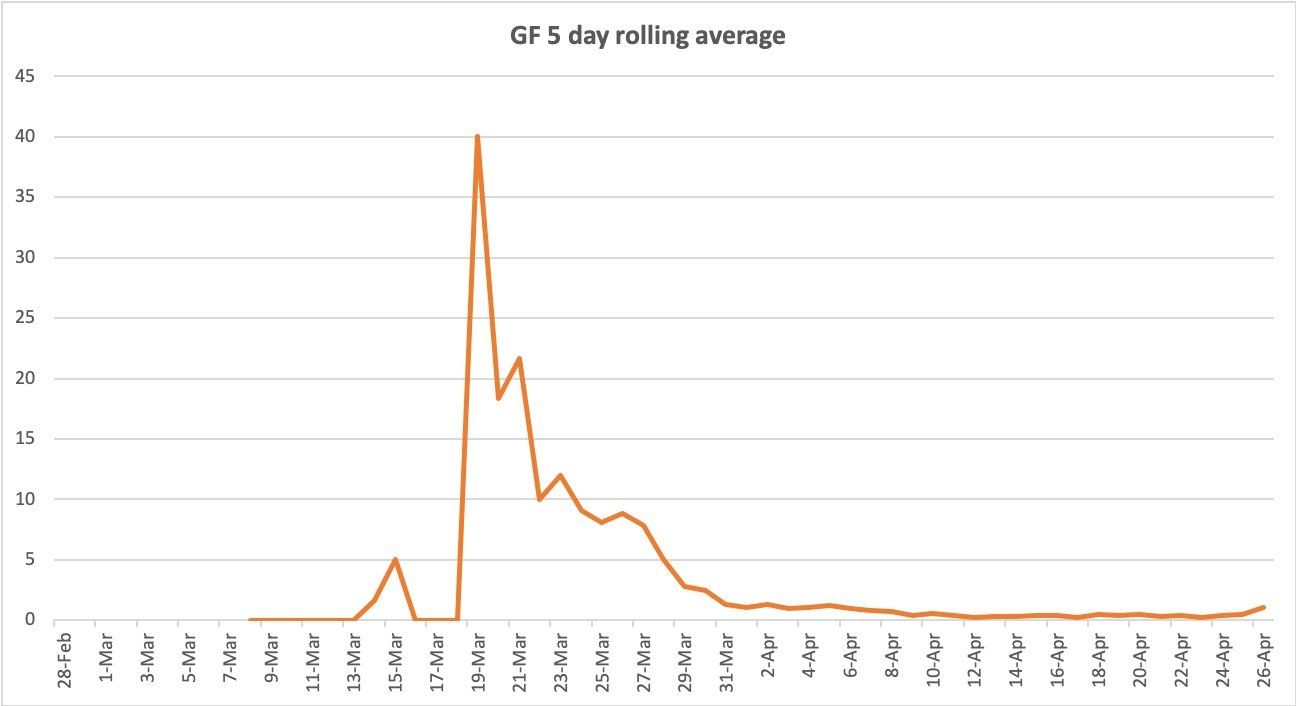
Transmission rate over time calculated on the basis of the new cases each day divided by the average cases over the prior Day 5 to Day 10, on the basis that people are infectious on average 5 days after they get infected themselves
In summary, our experiment in control of COVID-19 is a success to date, of course that is why we are moving from Alert Level 4 to Alert Level 3. We now have two weeks in which to test whether more contacts between people will overwhelm our ability to win at whack-a-mole, bopping the COVID-19 cases on their figurative heads as they arise. If our contact tracing, testing and isolation strategies are up to that, we may be looking at an Alert Level 2 future. However, if the case numbers start rising and continue to rise in that period, our best case scenario will be staying with Alert Level 3. We need to manage COVID-19 within our country because the vaccine solution remains in the distance with the most hopeful scenarios seeing manufacturing 1 year out and 18 months still seen as more realistic. Whether we need the degree of restrictions we have been experiencing will become evident in Alert Level 3. The Swedish experiment (and also the Australian experiment which I have not mentioned), both provide hope that life in a high degree of lockdown could be coming to an end.
Finally, the end of Level 4 has also signalled to me that it is time to provide a bit more spacing between my posts. The world is, thankfully, not spinning quite as fast as at the outset; the rate of change and news is dropping off. Not to mention, I need to get that woodwork done. So I will drop back to posting twice weekly, while there appears to be sufficient rationale to do so. See you in a couple of days!


